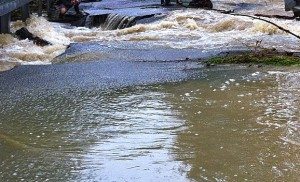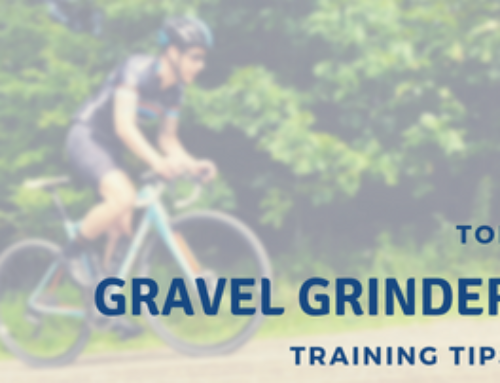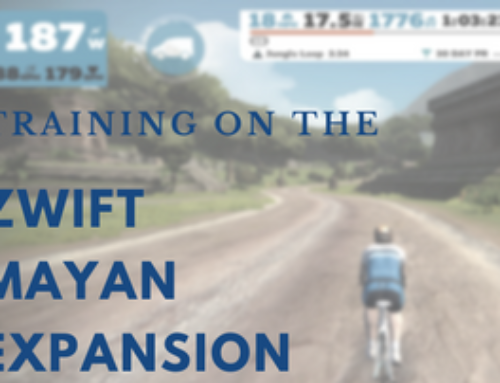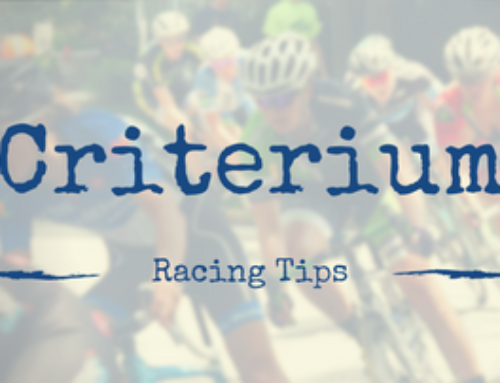With the arrival of Hurrican Irene to the east coast, it comes to mind that perhaps a post on rain riding skills is necessary. Although it's unlikely that you'll be out in anything even remotely resembling a hurricane, rain can still present a hefty challenge, especially if you're not prepared for it.
Think Ahead and Prepare
This should be a no brainer, but check your forecast before you ride. If there's a threat of rain in the forecast, you should consider preparing yourself for a (possible) wet excursion. This means simple things like packing a rain jacket and letting a few PSI out of your tires. It also means changing riding style to be a little more cautious and take fewer risks. Essentially, each one of the following tips is designed to get you home safely and more comfortably.
Dress the Part
Rain jackets are perhaps one of the biggest and best defenses against the wet. Ideally they are lightweight and compact enough to roll up and stick in a jersey pocket, yet water resistant enough to keep you dry even through heavier rains. Especially important is the idea of a drop tail; as riders hunch forward over the bars, jackets and jerseys tend to ride up the back, exposing the rear end and lower back to wheel spray and errant rain drops.
In addition to a rain jacket, you may opt for shoe covers and a cycling cap to keep the water out of your shoes and off your face as best as possible. Nothing is worse than water pouring off the front of your helmet, streaking your glasses and getting road grit in your eyes. Similarly, when your shoes and socks become small, landlocked lakes your cycling enjoyment sinks like the Titanic. Like your rain jacket, thinking ahead and checking the forecast can find you prepared for these eventualities, and you'll be glad you were.
Lower Tire Pressure
Dropping tire pressure 5 to 10 PSI will help to put more rubber in contact with the road. Tires that are inflated hard will tend to bounce off minor imperfections in the road surface during cornering, and when landing back on terra firma (especially in the wet) hard tires will have a greater chance of sliding out. By dropping tire pressure, the rubber will conform to the road better with more of the actual tread remaining in contact with the pavement. You don't need to drop the tire's pressure so much that you risk pinch flats, nor that you'll risk rim damage if you hit a pothole, but a few PSI may give you the edge that you'll need to maintain control in sketchy conditions. Combine this with some more careful riding and you'll be able to get home upright and safe.
Ride Cautiously
No, you don't have to corner like a half blind great grandma in a Buick, but you should rein in your daredevil tendencies a little bit. Avoid high speed cornering if possible, especially in the first minutes after rain has begun to fall; as rain hits pavement initially, the oils in the tarmac come to the surface and make the pavement more slick. The more rain that falls on the tarmac, the more oil washes away and the "stickier" the pavement becomes. But high speed cornering isn't quite as fear inducing as some of the less obvious dangers on wet roads.
Things that we often don't think about on dry rides, such as tar patches (AKA black tar snakes) and painted lines can be the most dangerous obstacles in your way when the going gets wet. Both tar snakes and painted lines can nearly turn to ice when mixed liberally with water. The slick surface is unlike regular pavement: grip is poor to begin with, and when water is added grip becomes non-existent. Avoid both painted lines and tar snakes at all costs, and this is doubly true in turns. If you're cornering at high speed over a painted crosswalk, be prepared to find yourself sliding across the asphalt if you're not extremely careful.
 Lastly, you may remember the joy of running through and stomping in puddles as a child (I know I do…) How many times did you find a surprise lurking in one of those puddles? Many years of mountain biking has retrained (and reinforced that retraining) many a rider to avoid standing water like the plague. Especially when runoff is murky or muddy, you can't see exactly what is in the puddle. Often, even clear puddles can hide nasty surprises with reflections, leaves and settled muck. Without knowing it, you could be riding through glass, sticks, wet leaves (a quick way to find yourself asphalt surfing) or riding into the pothole that swallowed Cincinnati. Even though the temptation is there, resist the urge to splash around and consider what might be hiding in there.
Lastly, you may remember the joy of running through and stomping in puddles as a child (I know I do…) How many times did you find a surprise lurking in one of those puddles? Many years of mountain biking has retrained (and reinforced that retraining) many a rider to avoid standing water like the plague. Especially when runoff is murky or muddy, you can't see exactly what is in the puddle. Often, even clear puddles can hide nasty surprises with reflections, leaves and settled muck. Without knowing it, you could be riding through glass, sticks, wet leaves (a quick way to find yourself asphalt surfing) or riding into the pothole that swallowed Cincinnati. Even though the temptation is there, resist the urge to splash around and consider what might be hiding in there.
Taking a few minutes to think about the weather, your own preparedness and ride with a little extra dose of caution can increase your enjoyment of shoddy weather, not to mention ensure your safety. Most of us try to avoid damp conditions where possible, but it's better to be safe than sorry, so get out in the wet and learn how to handle it.





